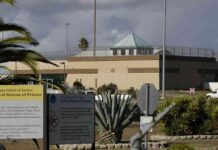Three individuals armed with a gun carried out a late-night robbery in Central Park on Thursday, stealing an e-bike from a 27-year-old man in the latest incident of a surge in robberies within the iconic greenspace, according to the police.
The robbery took place at East 102nd Street and East Drive at around 11:30 p.m., with the trio brandishing a gun as they approached the victim. In addition to the e-bike, they also took the man’s cellphone, backpack, and an undisclosed amount of cash before fleeing the scene.
The suspects were described as three males with dark complexions aged between 18 and 20 years old, all wearing dark hoodies. As of Friday morning, no arrests had been made in connection with the robbery.
According to the latest data, robberies in Central Park have increased by nearly 106 percent this year, with 35 incidents reported compared to 17 during the same period last year. This latest heist is just one of many that have occurred in the park recently, contributing to the overall surge in crime.
Last month, NYPD Chief of Patrol John Chell revealed that an 11-year-old boy who was arrested in a subway robbery in Queens was linked to a series of robberies in Central Park that were carried out by a group of migrant kids. Chell stated that up to 12 migrant boys or young men have been connected to around 10 robberies in the park.
Despite these connections, police have not been able to confirm whether Thursday night’s robbery is linked to any existing crime patterns. The incident serves as a stark reminder of the ongoing issue of crime within Central Park and the challenges faced by law enforcement in addressing and preventing such offenses.
The Impact of Robberies in Central Park
The recent surge in robberies in Central Park has raised concerns among residents and visitors alike regarding the safety and security of the iconic greenspace. With incidents on the rise, many are left wondering what measures can be taken to address this issue and ensure the well-being of those who frequent the park.
The increase in robberies not only poses a threat to individuals who use Central Park but also has broader implications for the reputation of the park as a whole. As a popular destination for tourists and locals alike, the park’s image and appeal may be negatively impacted by the perception of rising crime rates.
In response to these concerns, law enforcement agencies have stepped up patrols and surveillance efforts in an attempt to deter criminal activity and apprehend those responsible for the robberies. However, the challenges of policing a vast and diverse space like Central Park present unique obstacles that must be navigated in order to effectively combat crime.
Addressing the Root Causes of Crime
While increased policing and security measures are important in addressing the immediate threat of robberies in Central Park, it is also essential to consider the underlying factors that contribute to criminal behavior. Poverty, lack of access to education and opportunities, and social inequality are just a few of the root causes that can lead individuals to engage in illegal activities.
By addressing these systemic issues and investing in programs and initiatives that support at-risk communities, it is possible to create a more equitable society where crime is less prevalent. Education, job training, mental health services, and affordable housing are all key components of a comprehensive approach to crime prevention that seeks to address the root causes of criminal behavior.
Community Engagement and Collaboration
In addition to addressing root causes, community engagement and collaboration are vital aspects of any strategy to combat crime in Central Park. Building trust between law enforcement agencies, residents, and community organizations is essential in creating a safe and supportive environment for all who visit the park.
By working together to identify and address concerns, share information, and implement targeted interventions, stakeholders can create a more cohesive and effective response to crime in Central Park. Community policing initiatives, neighborhood watch programs, and outreach efforts are all valuable tools in engaging with the community and fostering a sense of ownership and responsibility for the park’s safety.
In conclusion, the recent robbery in Central Park serves as a stark reminder of the challenges posed by rising crime rates in the iconic greenspace. By addressing root causes, engaging with the community, and implementing targeted interventions, it is possible to create a safer and more secure environment for all who visit the park. Collaboration and cooperation between law enforcement, residents, and community organizations are essential in ensuring the well-being of those who frequent Central Park and preserving its status as a cherished public space.






















